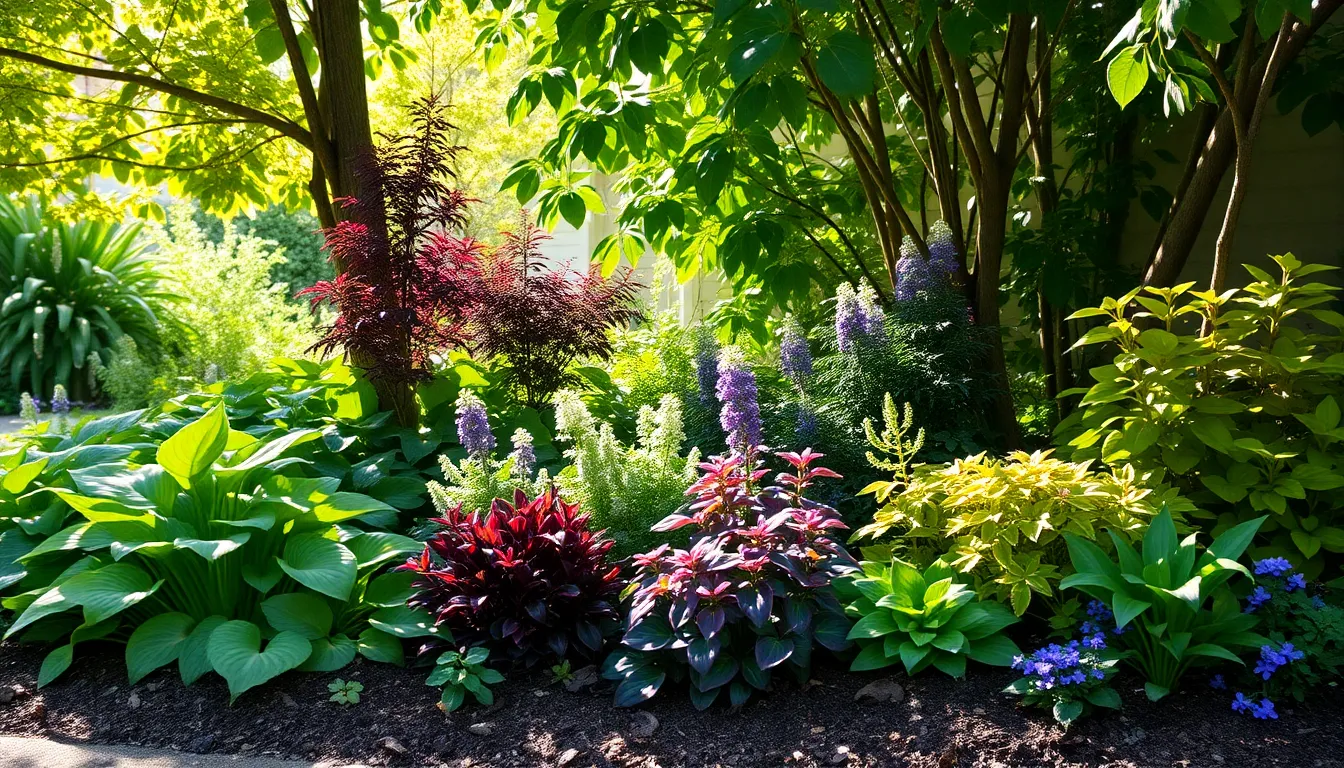
Plants for Dry Shade: Transform Your Gloomy Garden into a Lush Oasis
Finding the right plants for dry shade can feel like searching for a unicorn in a haystack. With limited sunlight and parched soil, many gardeners throw in the towel, resigning themselves to a life of bare patches and weeds. But fear not! There are plenty of resilient plants out there ready to turn your gloomy corners into thriving green havens.
Imagine lush foliage and vibrant blooms where you once saw only despair. From hardy ferns to colorful groundcovers, these champions of the shade not only survive but thrive in those tricky conditions. So grab your gardening gloves and get ready to transform your dry, shady spots into the envy of the neighborhood. After all, who says shade can’t be fabulous?
Plants for Dry Shade
Dry shade presents unique challenges for gardeners. Limited sunlight and dry soil affect plant growth, but certain species excel in these conditions.
Causes of Dry Shade
Dry shade develops primarily due to tree canopy coverage. Trees absorb significant moisture and create shaded areas beneath them. Soil composition also plays a role, as sandy or rocky soil can drain quickly, exacerbating dryness. Additionally, the orientation of the landscape influences light availability during various seasons. Trees can also compete with nearby plants for water, further stressing vegetation. Understanding these causes helps gardeners make informed choices.
Characteristics of Dry Shade Areas
Dry shade areas feature specific physical and environmental traits. First, low light levels typically prevail throughout the day, limiting photosynthesis. Second, the soil often gains poor moisture retention, with dry conditions frequently observed. Third, temperatures can fluctuate significantly due to shade, impacting plant survival. Leaves of trees overhead might limit precipitation reaching the ground, increasing competition for moisture. These characteristics inform the selection of suitable plants, ensuring successful garden designs.
Best Plants for Dry Shade

Gardening in dry shade areas can present unique challenges, but several plants excel in these conditions. Selecting the right species transforms these spaces into lush gardens.
Perennials
Perennials such as Epimedium and Pulmonaria withstand dry shade well. Epimedium thrives in poor soil, offering delicate foliage and charming flowers. Pulmonaria, known for its attractive spotted leaves, provides early spring blooms for added color. Additionally, Heuchera showcases diverse leaf colors, from deep burgundy to bright lime. These perennials not only survive but also enhance the visual appeal of dry shade.
Ground Covers
Ground covers such as Ajuga and Vinca minor excel in low-light areas. Ajuga brings vibrant blue flowers and remains evergreen, providing year-round interest. Vinca minor creates a lush carpet of green, thriving in neglected corners. Lithodora, with its trailing habit, offers beautiful blue blooms while resisting drought. Choosing the right ground cover plants ensures these shaded spots stay lush and vibrant.
Tips for Successful Gardening in Dry Shade
Gardening in dry shade requires specific strategies to thrive. Focus on soil preparation and effective watering techniques to create a flourishing garden environment.
Soil Preparation
Start by assessing soil structure in dry shade areas. Amending soil with organic matter, like compost, significantly enhances moisture retention and nutrient availability. Incorporating well-rotted leaf mold or peat moss improves drainage while holding onto moisture. Testing soil pH helps determine appropriate plant choices. For acidic soil, select plants like Heuchera or Epimedium. Conversely, alkaline soil suits others, such as Pulmonaria. Mulching around plants can regulate soil temperature and retain moisture, preventing evaporation.
Watering Techniques
Adopting proper watering techniques ensures plants thrive in dry shade. Establish a consistent watering schedule, focusing on deeper, less frequent irrigation. This approach encourages roots to grow deeper in search of moisture. Drip irrigation or soaker hoses provide targeted hydration directly to the root zone, minimizing waste. Water early in the morning or late in the evening to reduce evaporation risks. Observing plant health can guide water needs, ensuring plants receive adequate moisture without becoming waterlogged.
Choosing the Right Plant for Your Space
Choosing plants for dry shade requires careful consideration of several factors that impact growth and design. Soil type significantly influences plant success, with sandy or rocky soils draining moisture quickly. Light conditions also dictate options, as low light levels limit many plant choices. With fluctuating temperatures common in dry shade areas, selecting resilient species becomes essential. Understanding these factors equips gardeners to make informed decisions for flourishing gardens.
Factors to Consider
Light availability impacts plant vitality. Many plants that thrive in dry shade prefer dappled sunlight or even full shade conditions. Soil quality can’t be overlooked, as enriching it with organic matter improves moisture retention. Local climate conditions play a role; dry regions or windy environments may exacerbate dryness. Additionally, the mature size of selected plants affects spacing and overall aesthetics—planning for adult dimensions ensures harmony in the garden design.
Design Ideas for Dry Shade Areas
Using layers creates visual interest in shady spots. Incorporating taller plants, such as ferns, at the back provides a lush backdrop. Middle-layer plants like Heuchera add color and texture without overcrowding. Ground covers such as Vinca minor can fill in gaps, ensuring no bare soil is exposed. Mixing colors and leaf shapes enhances the aesthetic, making dry shade areas vibrant. Consider adding decorative elements, like boulders or garden art, to further elevate the design while maintaining plant health.
Conclusion
Transforming dry shade into a thriving garden is entirely achievable with the right approach. By selecting resilient plants that thrive in low light and poor soil, gardeners can create vibrant spaces that defy common challenges. Incorporating a mix of perennials and groundcovers not only enhances visual appeal but also fosters a healthy ecosystem.
With proper soil preparation and watering techniques, these areas can flourish. Embracing the unique characteristics of dry shade can lead to stunning results. Ultimately, with a little creativity and knowledge, anyone can turn these often-overlooked spaces into beautiful, inviting gardens.



